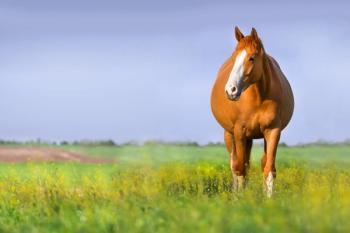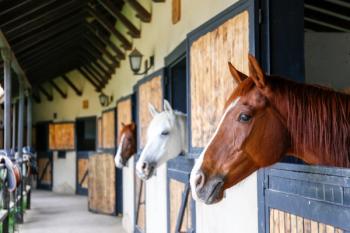
Mobile practice comes with a price, precaution
Automobile accidents are responsible for a significant amount of the deaths and injuries to veterinarians, especially large animal practitioners. This should come as no surprise because these road warriors commonly are rushing to stay on schedule and trying to negotiate roads, follow directions and return phone calls all at the same time. Long hours, especially during foaling and calving seasons, contribute to fatigue. Drowsiness and driving definitely do not mix.
Automobile accidents are responsible for a significant amount of the deaths and injuries to veterinarians, especially large animal practitioners. This should come as no surprise because these road warriors commonly are rushing to stay on schedule and trying to negotiate roads, follow directions and return phone calls all at the same time. Long hours, especially during foaling and calving seasons, contribute to fatigue. Drowsiness and driving definitely do not mix.
The United States National Highway Traffic and Safety Administration estimates that 40 percent of all serious car crashes can be blamed on fatigue. That translates to roughly 100,000 police-reported crashes each year that involve drowsiness or tired drivers.
PEMCO Insurance statistics show a drowsy driver traveling 70 miles per hour can travel the length of a football field in the 2.5 seconds of dozing or "micro-sleep" that often occurs. One study of more than 1,000 drivers showed that 10 percent admitted to having fallen asleep at the wheel, and 20 percent said they had momentarily dozed off. Following these dozing instances, drivers are usually intensely aware of their condition and try any number of things to stay awake. Many studies have been done to determine if any of these techniques actually help. Opening the windows or turning on the air conditioning helps somewhat, as does listening to music, eating and drinking a caffeine source, even hitting oneself (actually reported) does help. But the best method and the recommended step for a tired driver to take is to stop and rest. Even a 20-minute nap can be beneficial, and every veterinarian should remember that this short stop is far better than having to stop practice while you recover from a car crash or a more lamentable outcome.
Distractions are another area of concern for the busy mobile practitioner. All too often, a veterinarian is driving while trying to look at written directions or a map or lab values while talking to a client on the phone. Insurance company studies show eating is the biggest distraction seen among drivers (65 percent) followed by talking on cell phones (58 percent) and reading or looking at a paper and text messaging. These distractions account for 1,500 fatalities annually and an estimated 71,000 injuries each year.
However, There are steps that mobile veterinary practitioners can take to make themselves safer on the roadways. Don't drive when fatigued! Easier said than done, but we have all overlooked this important point in an effort to service clients. The consequences are too serious not to pay attention. Take another person along to drive if you are seriously fatigued and still must make a call. Pull over and take a power nap for 20 to 30 minutes. Open the windows and, OK, hit yourself if you must, but stay awake.
Learn to use all the features on your cell phone. Get and use a hands-free device or use BlueTooth technology to put both hands on the wheel. Use your phone directory to store phone numbers so you can locate and dial them easily with the least-possible number of distractions.
It is a good idea to take a defensive-driving course. Most equine practitioners will spend a significant part of their careers driving, and the truck or practice vehicle is the office. Learn to slide, spin and skid with control and handle driving bad weather. Even if you are not tired or distracted, it's a dangerous world on the road, and better driving skills can seriously reduce this cause of veterinary mortality.
Newsletter
From exam room tips to practice management insights, get trusted veterinary news delivered straight to your inbox—subscribe to dvm360.






